The 1980s was one of the most dramatic decades in the world. The automotive industry was no different, with many cool cars released then.
Whether it was a sports car, a supercar, or a family car, the 1980s oozed coolness. In this list, we will list some of the best and most incredible cars from the ’80s and discuss what made them great.
Many of these will be familiar, but you might find one or two surprises hidden within the list.
Ferrari F40
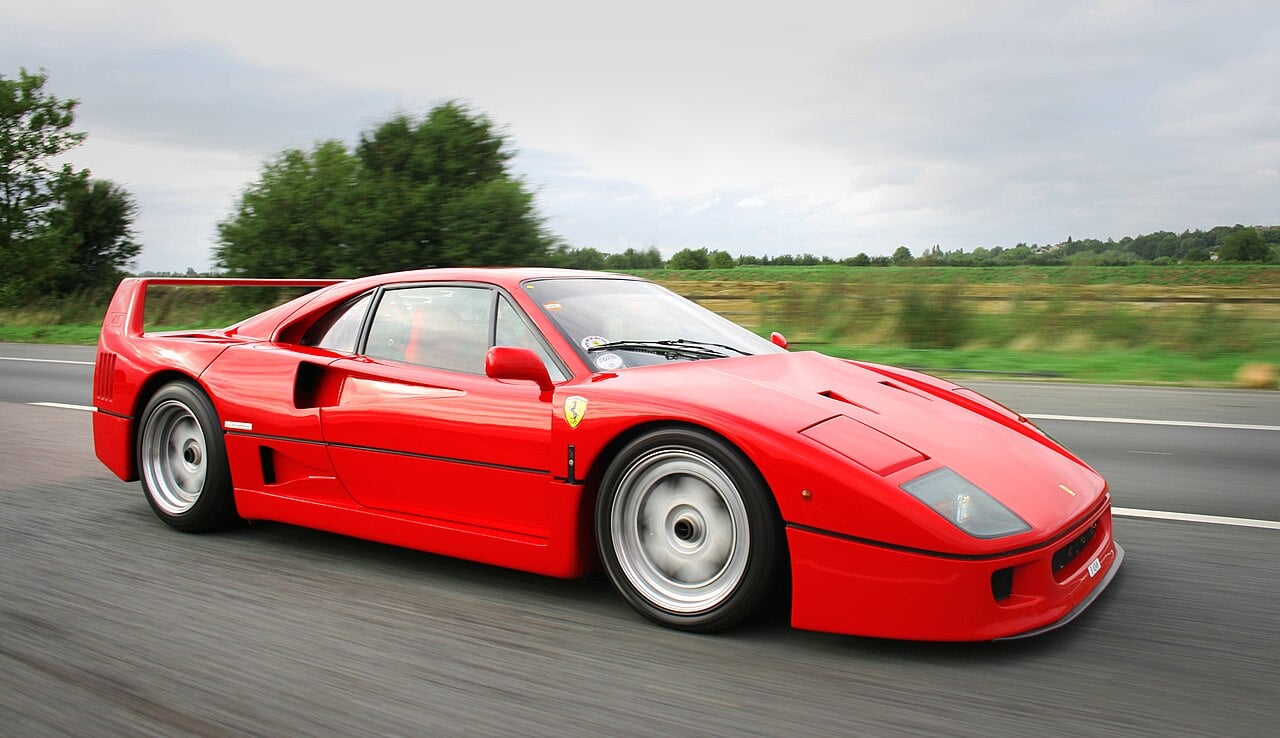
Many still say the Ferrari F40 is one of the greatest supercars ever. The F40 commemorated Ferrari’s 40th anniversary and was the last new car unveiled before Enzo Ferrari died in 1988. Under the hood is the famous 2.9-liter twin-turbocharged V8 engine with 471 hp, enough power to propel the F40 to a top speed of 201 mph. The 0-60 mph time was also impressive, at under four seconds.
Audi Quattro
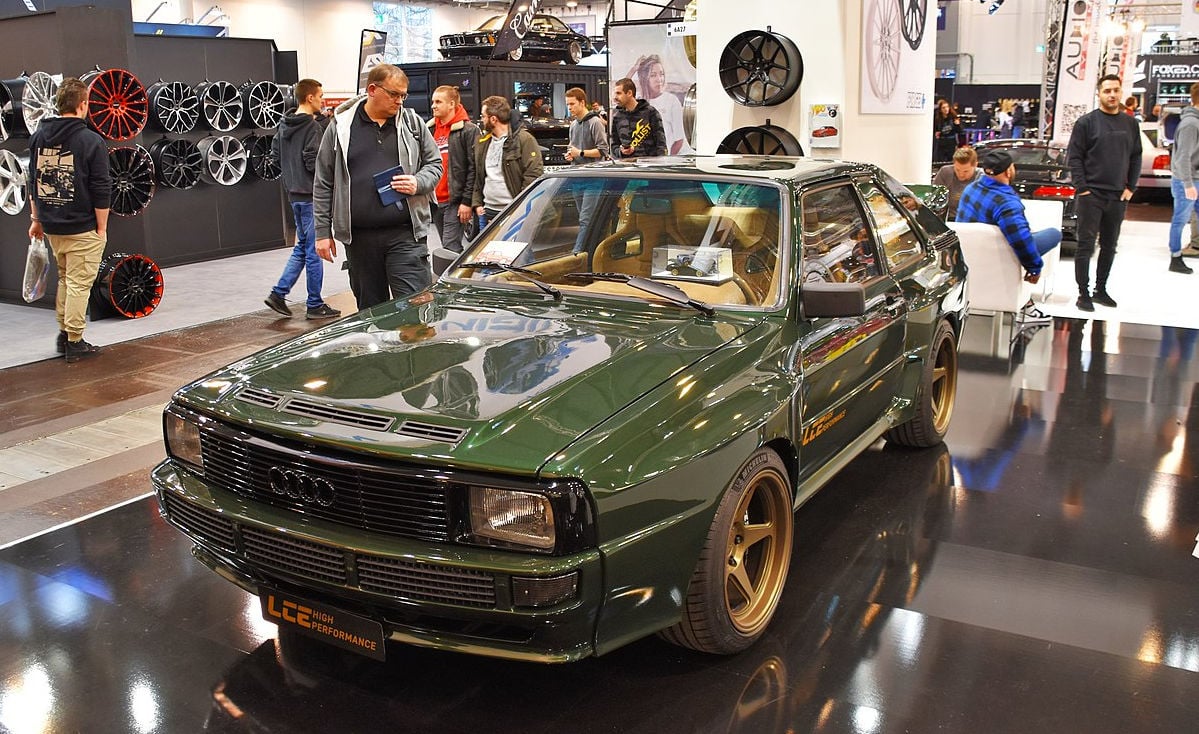
The Quattro made a name for itself in the World Rally Championship, becoming the first four-wheel drive car to win the title. But the Quattro was also a superb sports car, with the power sourced from the 200 saloon 2.1-liter turbocharged engine.
First-Generation Acura Integra
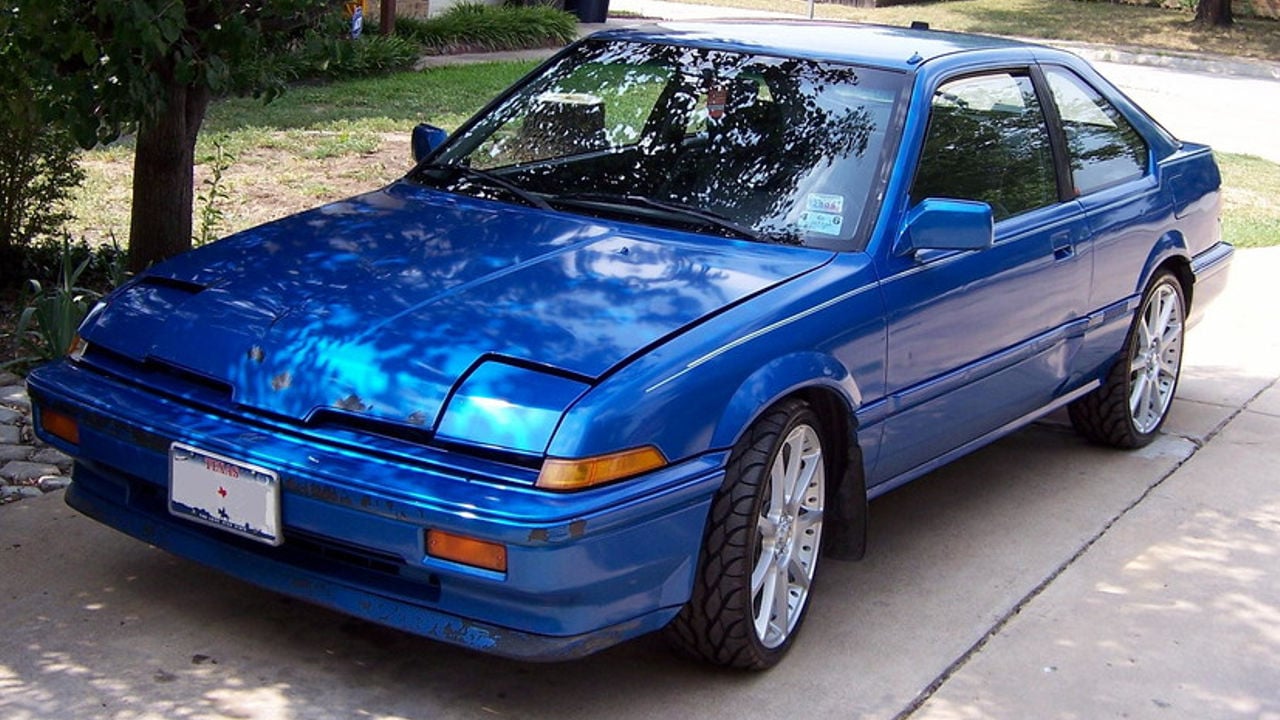
While not as celebrated as the later generations, the first-gen Acura Integra is still a fantastic car. Affordably available in three and five-door packages, the original Integra had a 16-valve 1.6-liter four-cylinder under the hood, and 118 hp was plenty for a car that weighed 2,500 lbs. The original 1987 base price of $9,859 roughly converts to $21,000 in today’s money, highlighting how affordable the Integra was.
BMW E30 M3
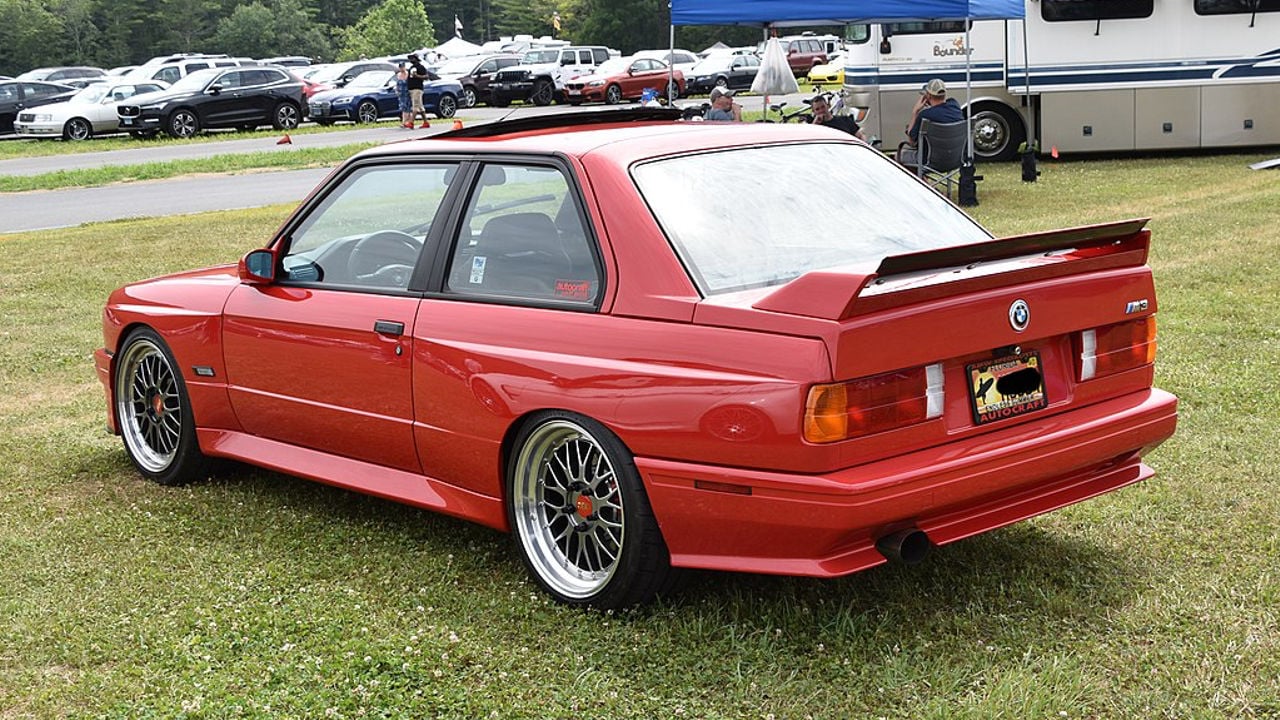
The first generation of the M3 is still the best. It is a proper homologation special created to allow BMW to race the car in the FIA Group A series, such as the European Touring Car Championship. Flared fenders, a new body kit, and a large rear spoiler helped differentiate it from the regular 3-series. Under the hood was a road-going, naturally-aspirated version of the BMW turbocharged F1 engine. The US version of the E30 M3 made 192 hp and 170 lb-ft of torque.
Buick Grand National GNX
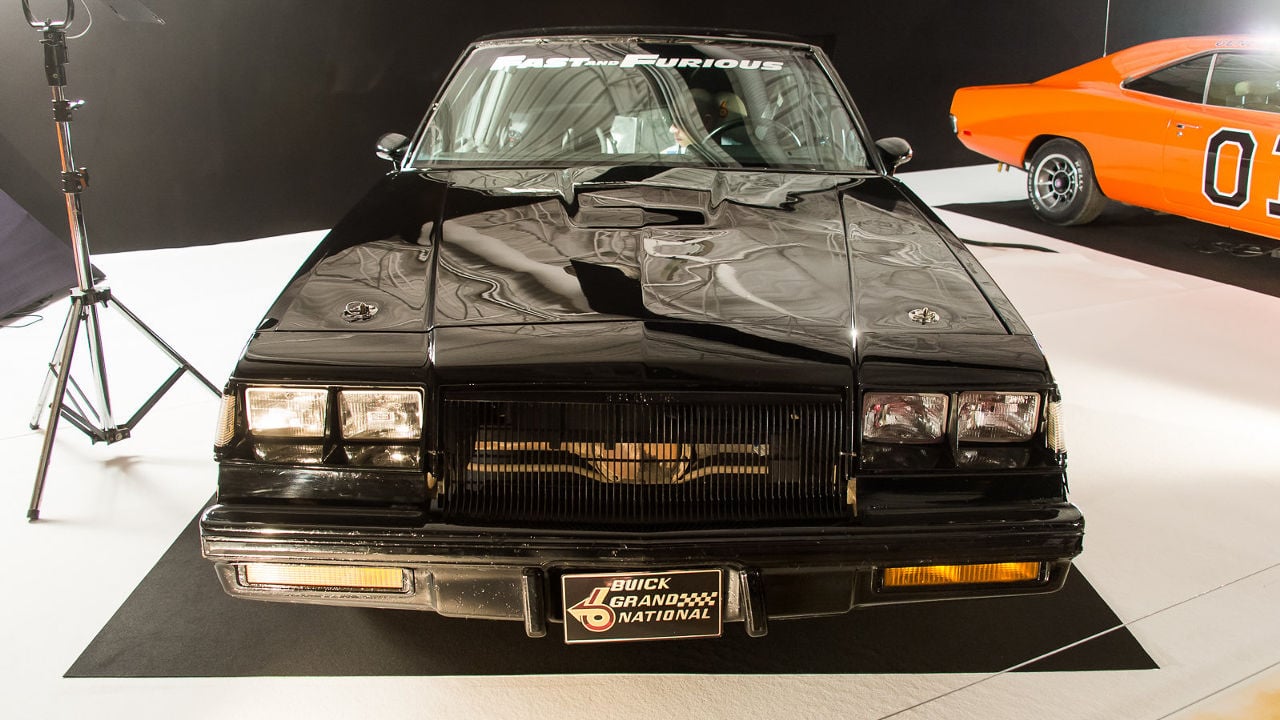
The 1987 GNX was a fitting swansong to the famous Buick Grand National. It was a limited-edition, higher-performance Grand National, with just 547 units produced in total. The car was a collaboration between Buick and McLaren Performance Technologies, and the mighty 3.8-liter V6 officially produced 276 hp and 360 lb-ft of torque. However, independent sources quoted the power output closer to 300 hp. A 0-60 mph time of just 4.7 seconds meant the GNX was a menace on the drag strip.
Chevrolet Camaro IROC-Z
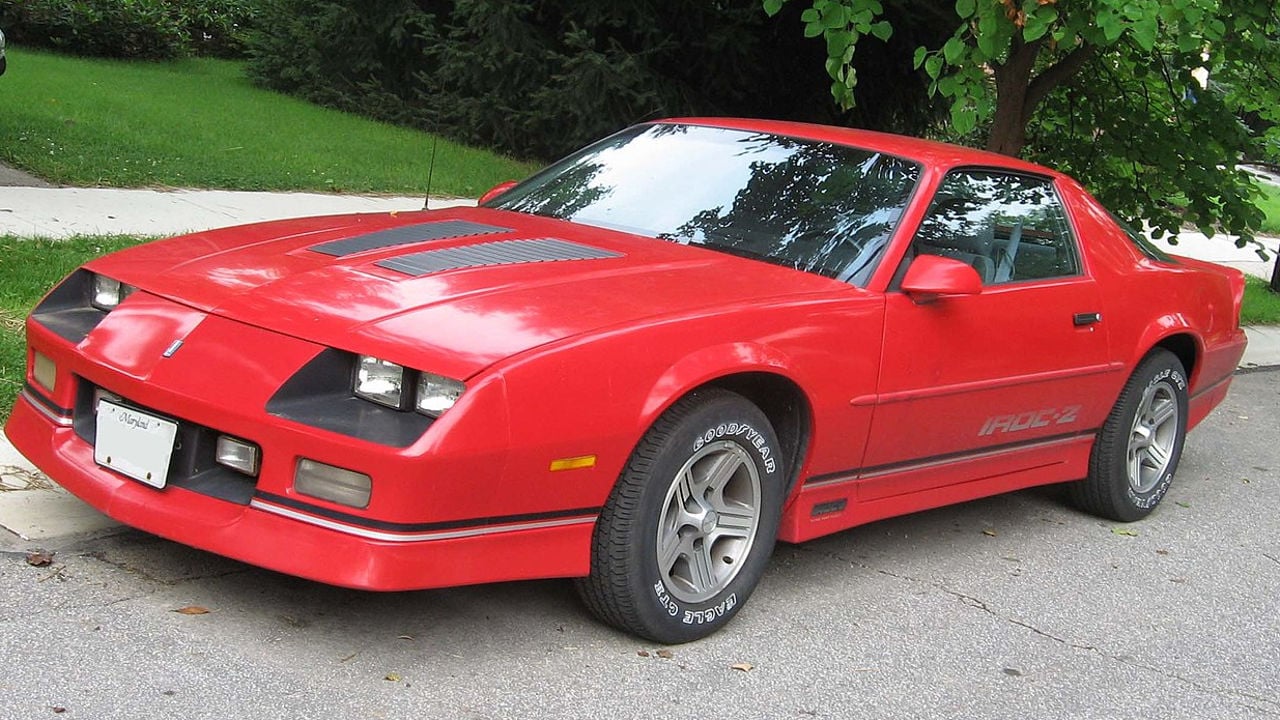
While several versions of the third-generation Chevrolet Camaro fell flat, this differs from the IROC-Z version. The IROC-Z has the 5.7-liter Corvette V8 under the hood, producing 220 hp in the IROC-Z to knock the Fox Body Ford Mustang off its perch. Speed tests by publications such as Car & Driver revealed the Mustang still had an edge, but the IROC-Z was a reminder that Chevrolet could still produce good sports cars. It was just a shame much of the F-Body Camaro lineup was such a letdown.
Peugeot 205 GTi
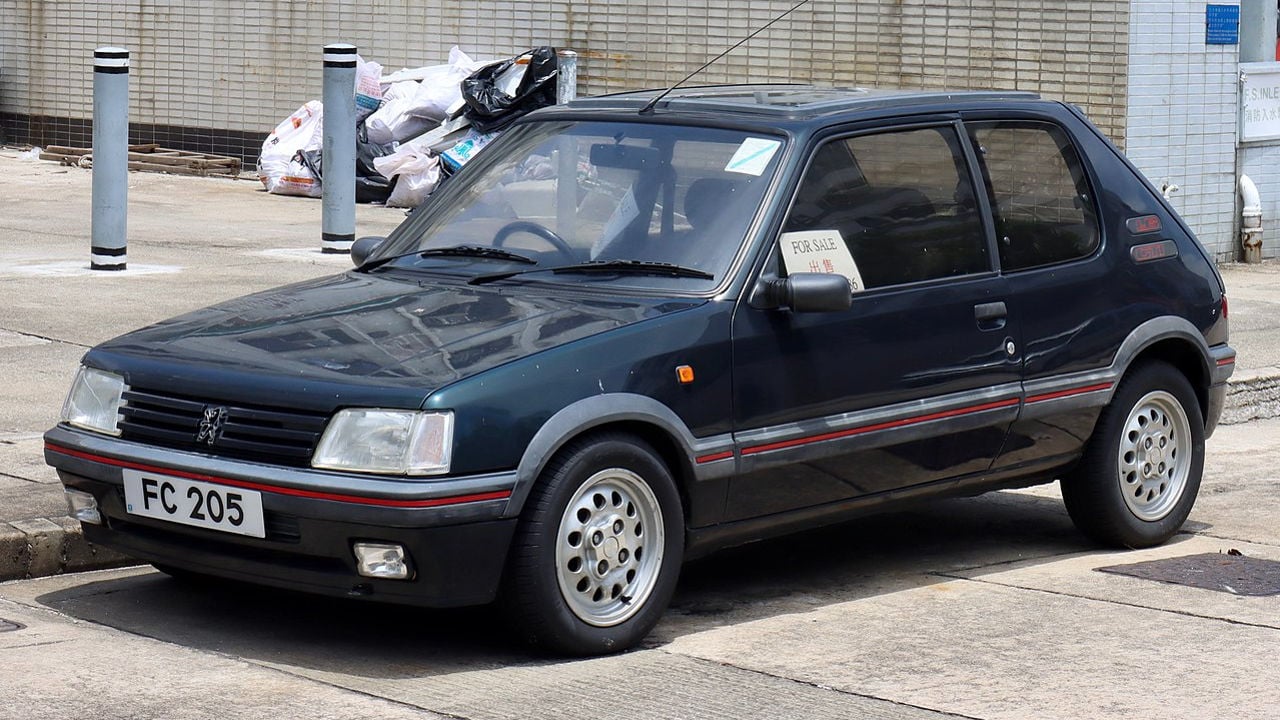
The 205 GTi is one of the best hot hatches ever produced. It first launched in 1984, and it took a little while for rave reviews from automotive journalists to come pouring in. Initially, the 205 GTi had a 1.6-liter 105-hp engine under the hood before Peugeot added a 130-hp 1.9-liter unit to the lineup. The 205 GTi would also become one of the legends of the Group B rally in the form of the 205 Turbo 16 Evo 2. It took 16 victories in the WRC and won the 1985 and 1986 Constructors’ and Drivers’ titles with Timo Salonen and Juha Kankkunen, respectively.
Porsche 959
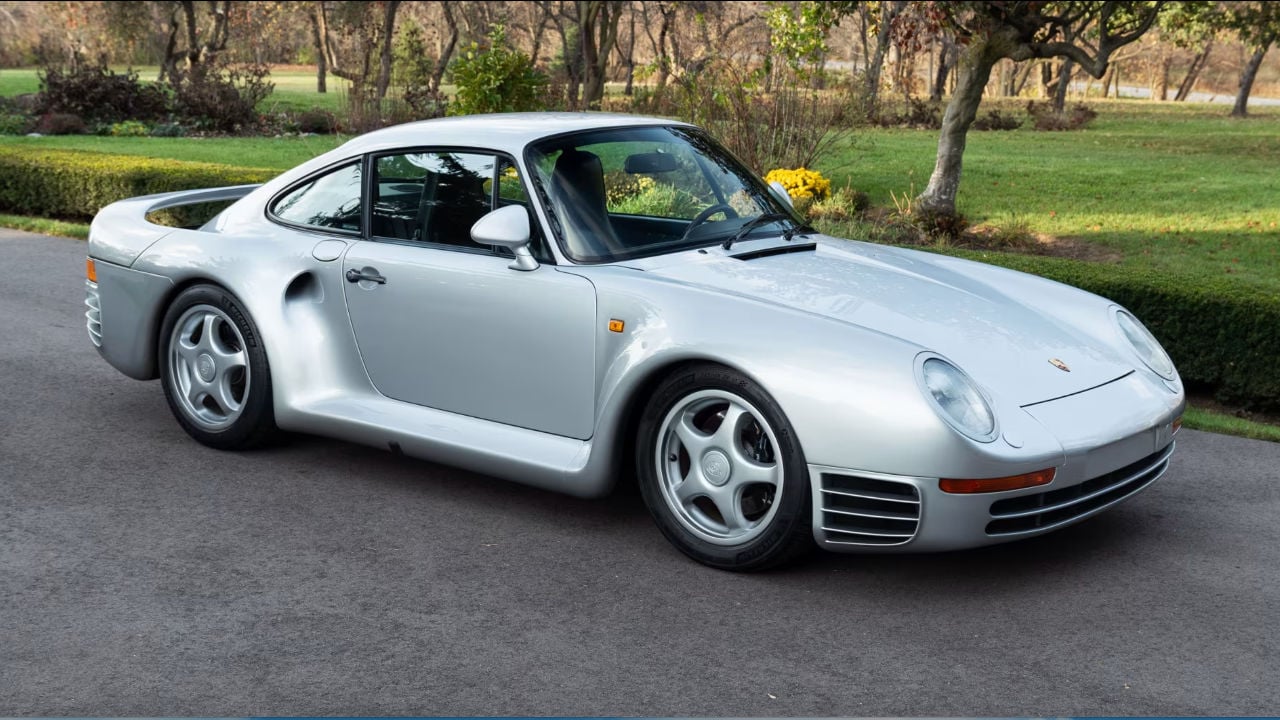
When it launched in 1986, the Porsche 959 could have been another Group B rally legend. It was set to compete in the WRC, but the deaths of Henri Toivonen and Sergio Cresto at the 1986 Rally Corsica ended Group B. However, the 959 would become one of Porsche’s finest sports cars. The 959 had a 2.8-liter air-cooled flat-six engine with two turbochargers under the hood, producing 505 hp. Enough to take on the mighty Ferrari F40.
Alfa Romeo GTV6
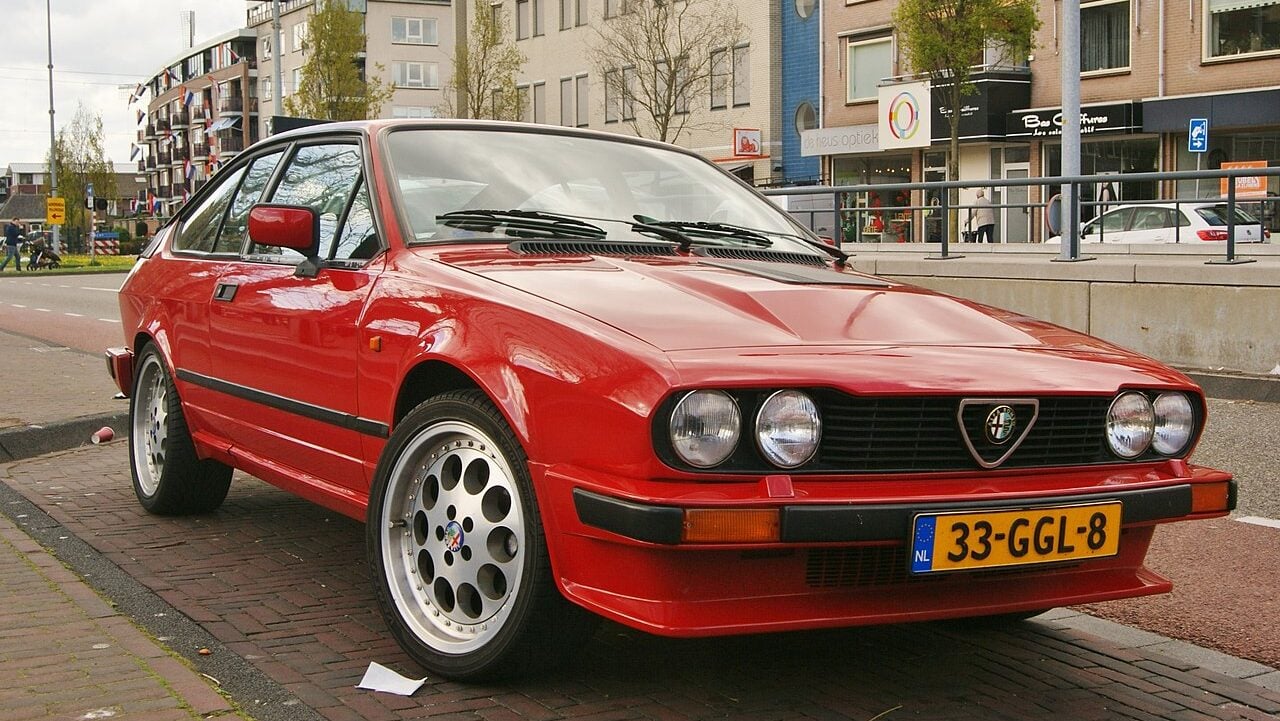
It might not be Alfa Romeo’s prettiest car, but the GTV6 is often regarded as one of their finest products. Built between 1981 and 1989, Alfa Romeo made just 21,700 GTV6s, with the iconic Busso V6 under the hood—an engine that produces one of the best soundtracks of any V6. There were, however, some problems. For example, the rear-mounted transmission sometimes threw a spanner into the works. But that was quickly forgotten as you let the 158 hp V6 engine sing.
DeLorean DMC-12
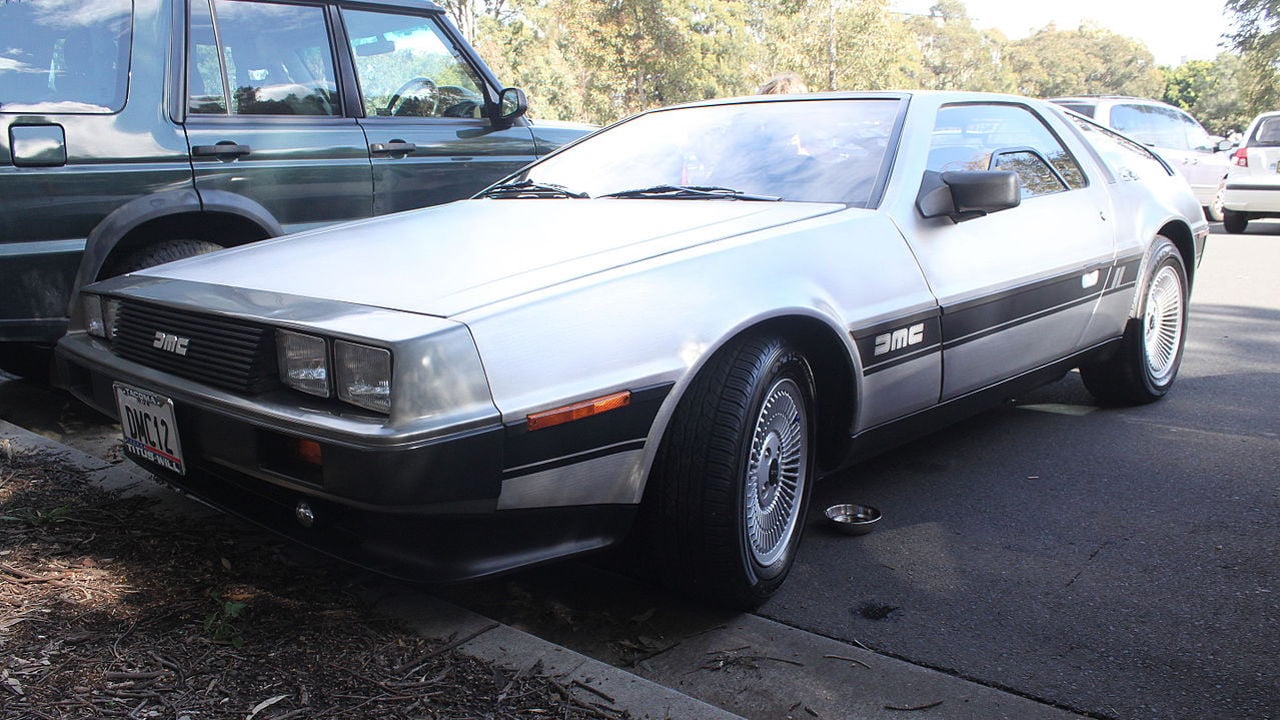
Okay, as a sports car, the DMC-12 was hopeless. Thanks to the 2.85-liter PRV V6 with 130 hp and 153 lb-ft of torque, it was massively underpowered. Then, there was the controversy surrounding company founder John DeLorean. However, its starring role in the Back to the Future franchise cemented the DMC-12’s status as a cult 1980s icon. As a sports car, it’s not cool at all. However, as an image of the 1980s, the DMC-12 is about as cool as they come.
Lancia Delta Integrale
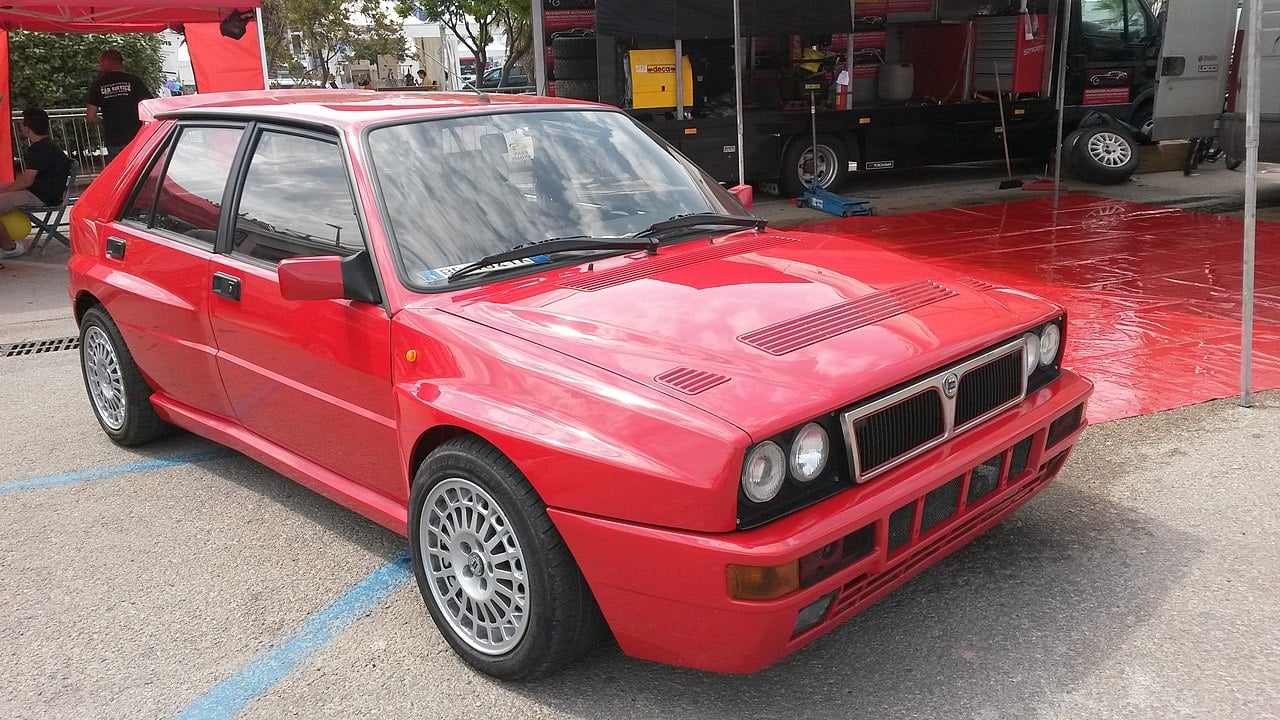
The Delta Integrale would become the final Lancia to win a World Rally Championship. From 1987 to 1992, the Integrale won six WRC constructors titles and four drivers titles simultaneously. This gave Lancia its record ten titles in the series, one that no other team and manufacturer has ever broken. The four-wheel-drive Integrale was also a spectacular road car, with its range of inline-four engines producing all the power needed. Its rallying pedigree made it a superb handling machine.
Lancia 037
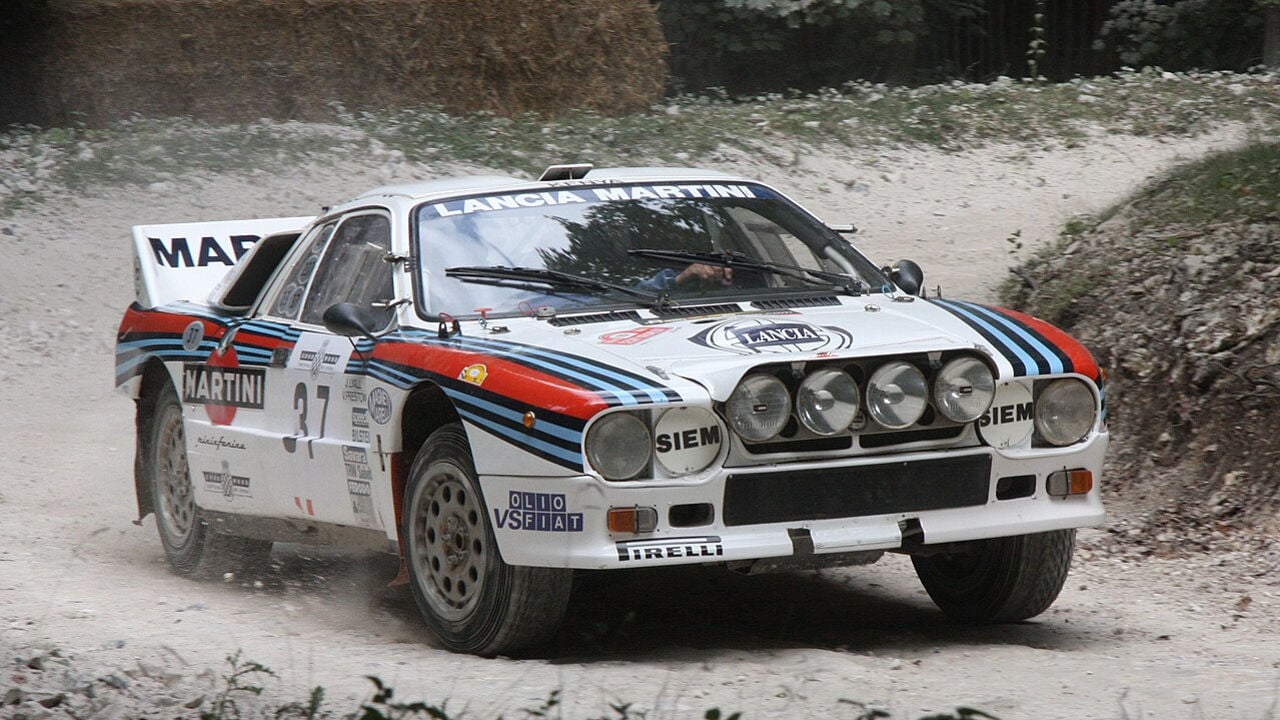
The 037 is the Lancia that fought against the odds in the WRC. As a two-wheel-drive car, it was primarily expected to lose massively to the four-wheel-drive Audi Quattro. However, Lancia used every trick in the book and exceptional determination to win the 1983 WRC title, making it the last time a two-wheel-drive car ever won a WRC championship. Lancia produced only a small number of street car versions, all of which had a 205 hp, 167 lb-ft of torque 2.0-liter supercharged inline-four under the hood.
Honda CRX
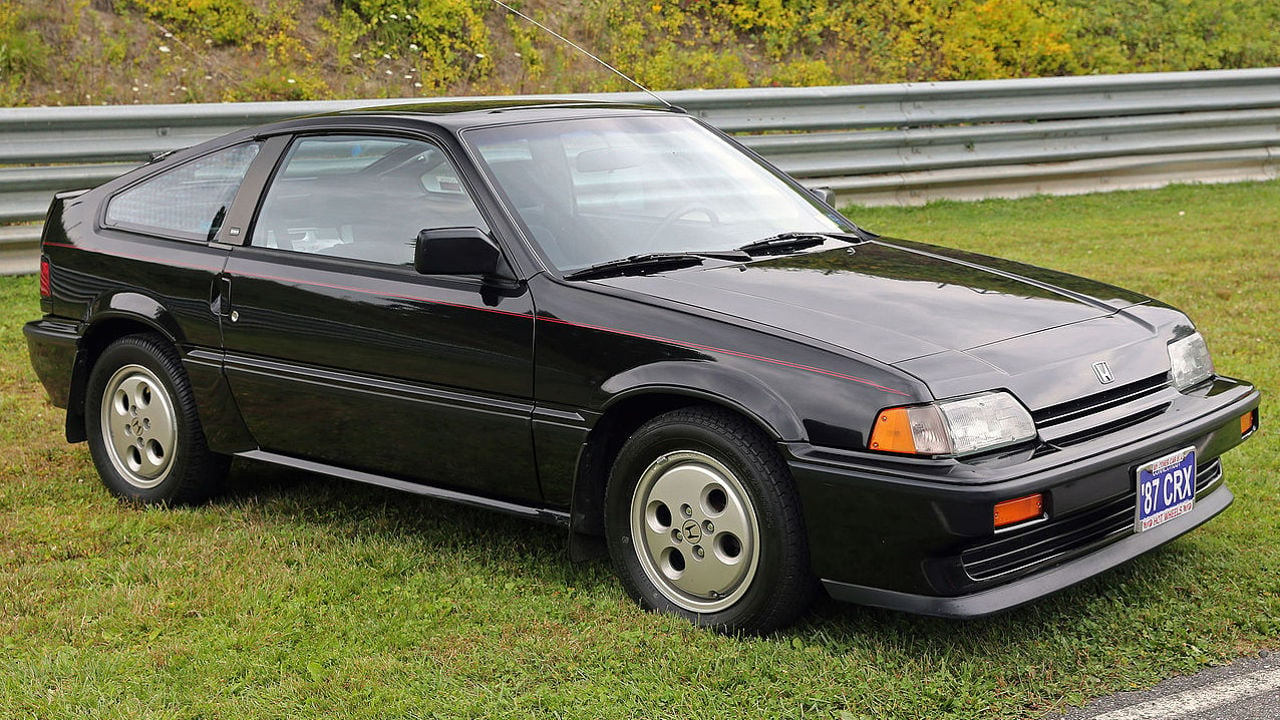
It might look unassuming, but the CRX is one of Honda’s most excellent products of the 1980s. Honda created the CRX as a shortened Civic but came with a very aerodynamic hatchback body and coupe styling. Under the hood, 1.5-liter and 1.6-liter engines powered the CRX, with some versions also having a 1.3-liter engine with 76 hp. Thanks to its lightness, the CRX was an agile little car, weighing just 819 lbs.
Porsche 944
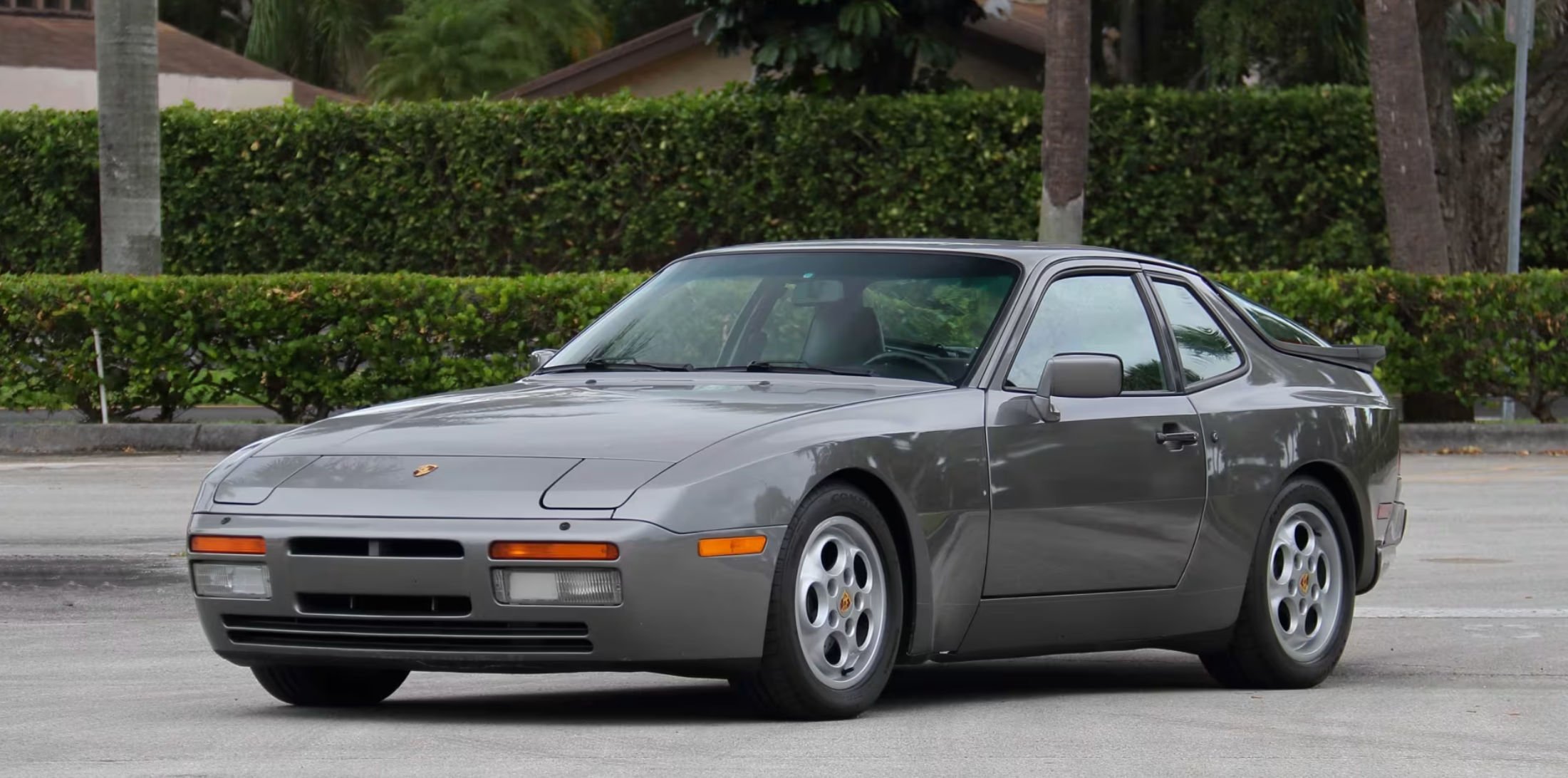
While Porsche might be most famous for the 911, they have produced some other spectacular cars. The 944 was a development of the earlier 924, and it was wider, lower, sharper, and stiffer than its predecessor. It also corrected the image problem of the 924, as many believed it wasn’t a true Porsche thanks to the original partnership with Volkswagen. The highlight of the 944 was its 2.5-liter four-cylinder engine, which gained a turbocharger in the exceptional 944 Turbo.
Renault Alpine GTA
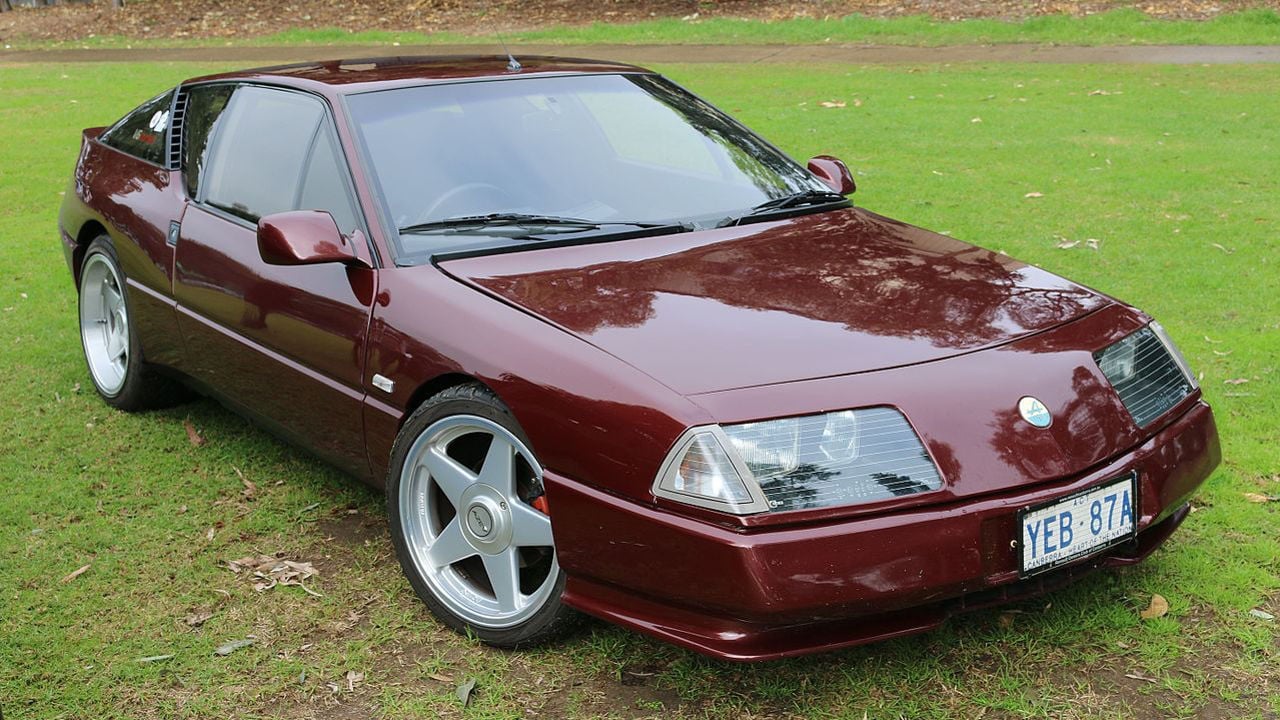
With just 7,400 produced, the Renault Alpine GTA is one of France’s rarest sports cars. Under the hood, it had a 2.9-liter V6 engine with 160 hp and 166 lb-ft of torque. It also had a turbocharged 2.5-liter engine with 200 hp and 214 lb-ft of torque. The Alpine GTA had exotic styling, sleek lines, and a streamlined front end. Plus, its fiberglass body meant it was light. The curb weight maximum was 2,646 lbs. With the turbocharged engine under the hood, the 0-60 mph time was a highly impressive 7.0 seconds.
Ferrari Testarossa
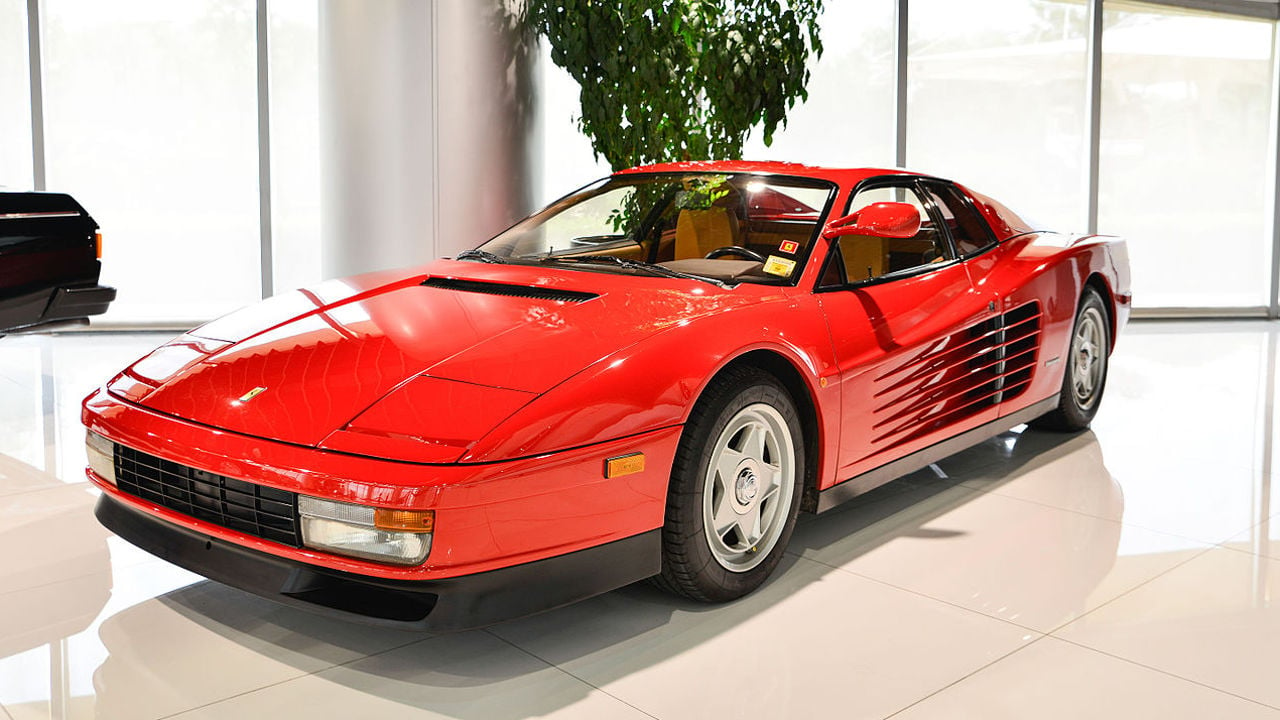
The Testarossa is one of the greatest Ferraris ever made and a true icon of the 1980s. The speed was all it needed to become a hit, with the 4.9-liter 380 hp flat-twelve engine propelling the supercar to a top speed of 180 mph. At the time, it was the fastest car you could buy when it made its US debut in 1986. Ferrari had also upped their style game from its predecessor, the 512BB. The Testarossa still has some of the wildest styling seen on a Ferrari product.
Ford Mustang GT 5.0
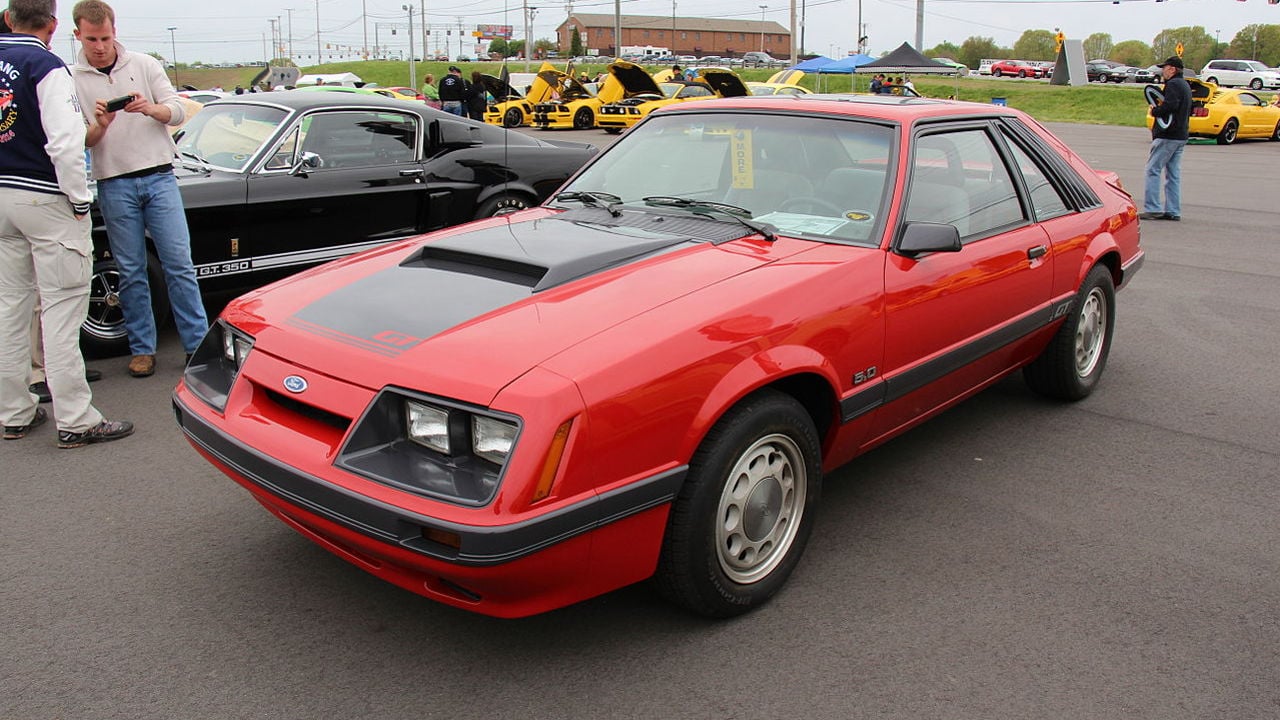
At first glance, you would be easily forgiven for never noticing a 1984 Ford Mustang GT 5.0, thanks to its similar design to other Fox Body Mustangs. But the red gumball on the roof, or two-tone paint, identified it as something special. Under the hood was a 4.9-liter, 302 ci V8 engine, which for the first time had fuel injection, plus new cylinder heads in 1987. This added to a power figure of 225 hp and 300 lb-ft of torque. The Mustang GT 5.0 could run the 1/4 mile in less than 15 seconds and go from 0-60 mph in just six.
Renault 5 GT Turbo
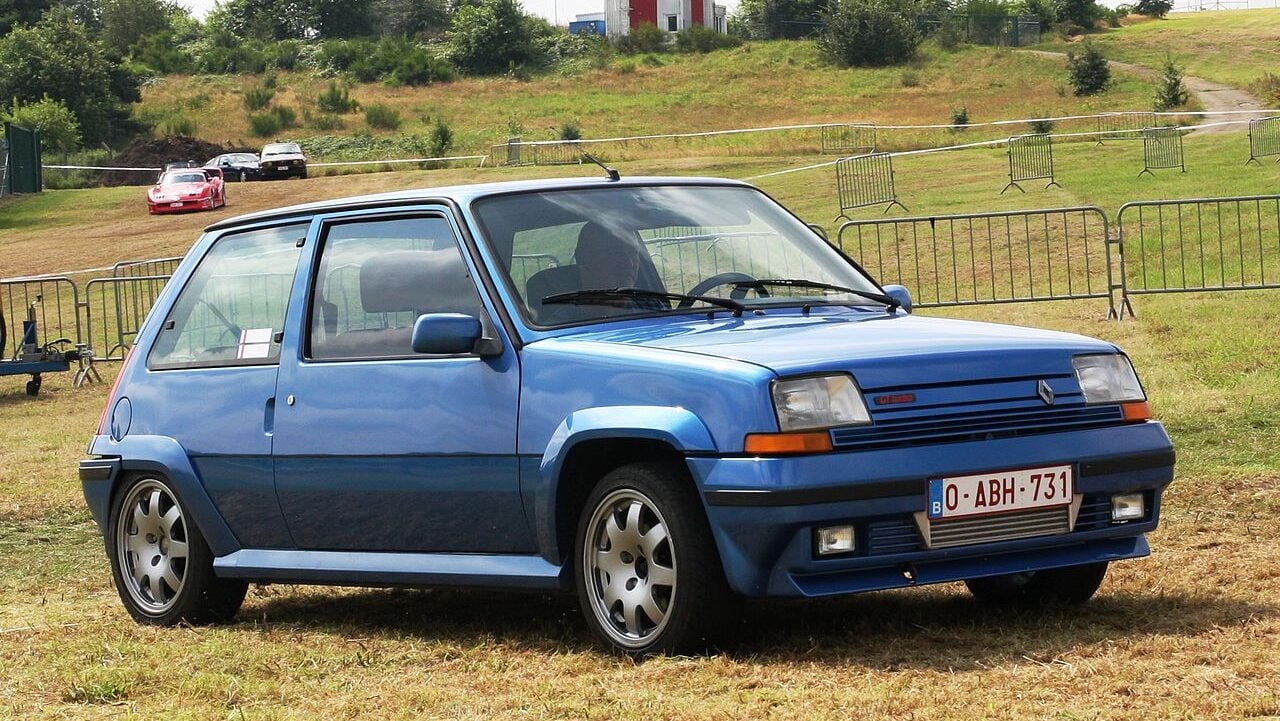
The Renault 5 GT Turbo is another of those great hot hatchbacks from the 1980s. Turbocharging was a big deal for Renault, and it cut its teeth with the technology in the 1970s in Formula 1. The GT Turbo was the zenith of that development, and the 1.4-liter turbocharged inline-four produced 157 hp and 163 lb-ft of torque. A top speed of 125 mph and 0-60 mph of 7.5 seconds proved the small Renault’s capability.
BMW E28 M5
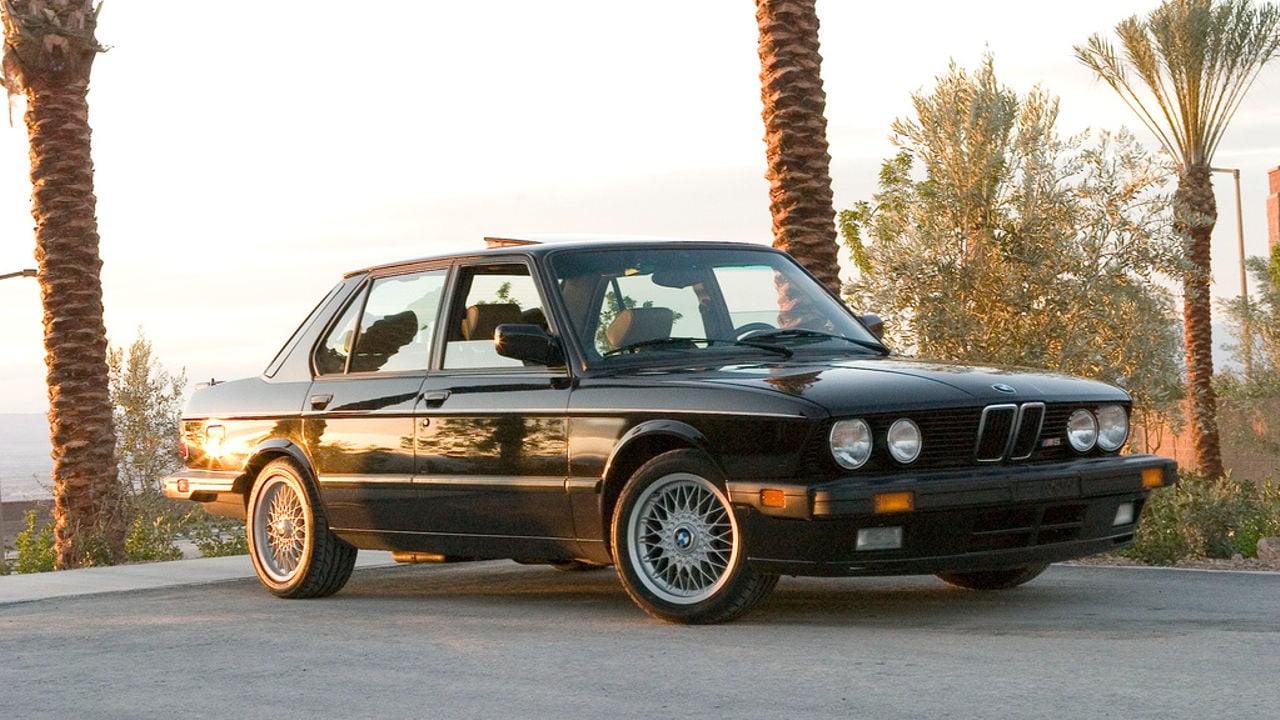
Like with the M3, the first generation of the M5 is arguably the best. It debuted in February 1985, based on the 535i chassis and with the M88/3 engine from the E24 M635CSi. The M88/3 produced 256 hp in the US and Canada, and in the final production version, an S38 inline-six powertrain was also available. The E28 would start off one of the world’s most significant lines of sports cars, continuing in 2024 with the F90 generation of the M5.
Lamborghini Countach
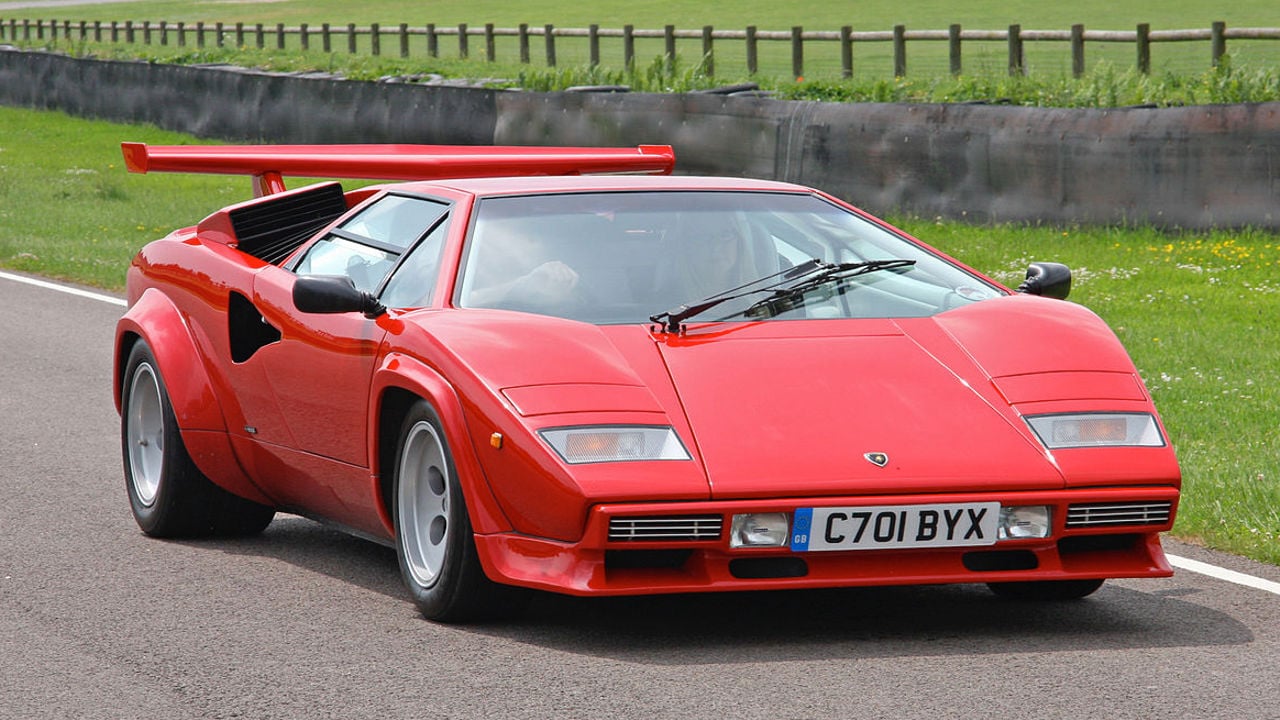
It would be wrong to list 1980s cars without including the Lamborghini Countach. Impractical it may have been, but the Countach was the poster boy supercar of the decade. Scissor doors, a huge V12 with up to 445 hp, and some of the most outrageous supercar styling were enough to cement the legend of the Countach. The icing on the cake was that this thoroughbred had a five-speed manual transmission. Now, the Countach is becoming one of the most sought-after and expensive collector cars on the market.
Mazda RX-7 Turbo II
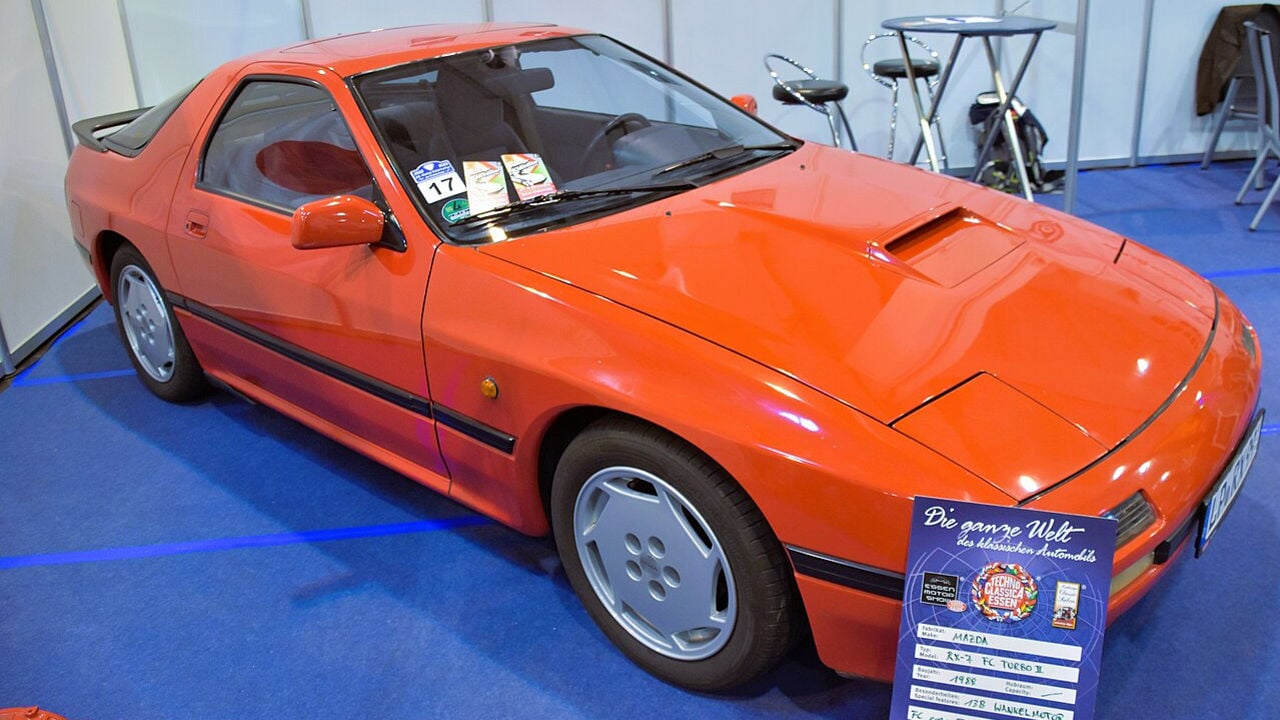
The second-generation Mazda RX-7 was a great alternative to the Porsche 924 at a fraction of the cost. Mazda took direct inspiration from the 924 and bigger 944 in creating the new RX-7, and they then decided to throw a turbocharger into the mix as well. Add in complex rear suspension, passive steering, and the twin-scroll turbo, and then you have one of the most excellent rotary-powered cars in history. The 182 hp sports car meant business, and it was a clear upgrade on the first-generation RX-7.
Merkur XR4Ti
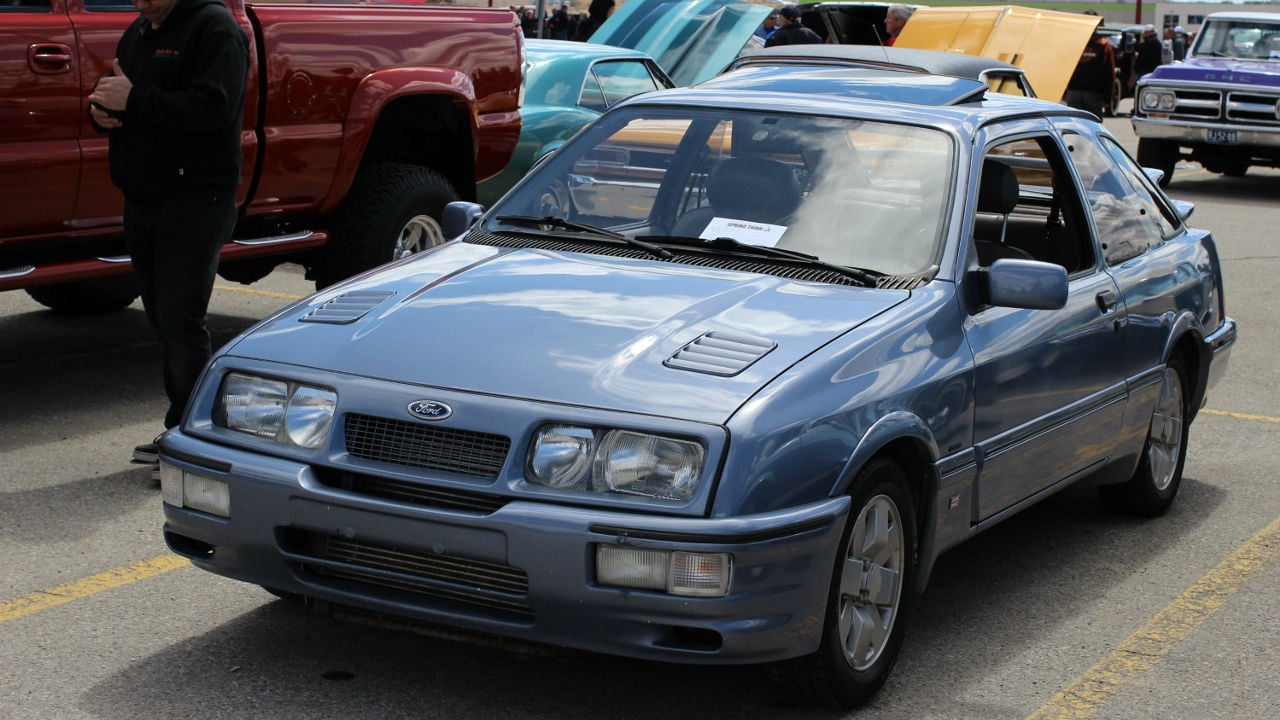
The Merkur ZR4Ti is a 1980s legend that you may have yet to hear of. It debuted in 1985, and in reality, the Merkur is a Ford federalized for sale in the United States. Based on the beefier XR4i version of the European Ford Sierra hatchback, the ZR4Ti had rear-wheel drive, independent suspension, and a 2.3-liter turbocharged four-cylinder engine. Sadly, mixed messaging and marketing hurt sales of the ZR4Ti, as did the fact Ford had to fit 850 additional parts to legalize the car in the US, which drove up costs.
Mitsubishi Starion
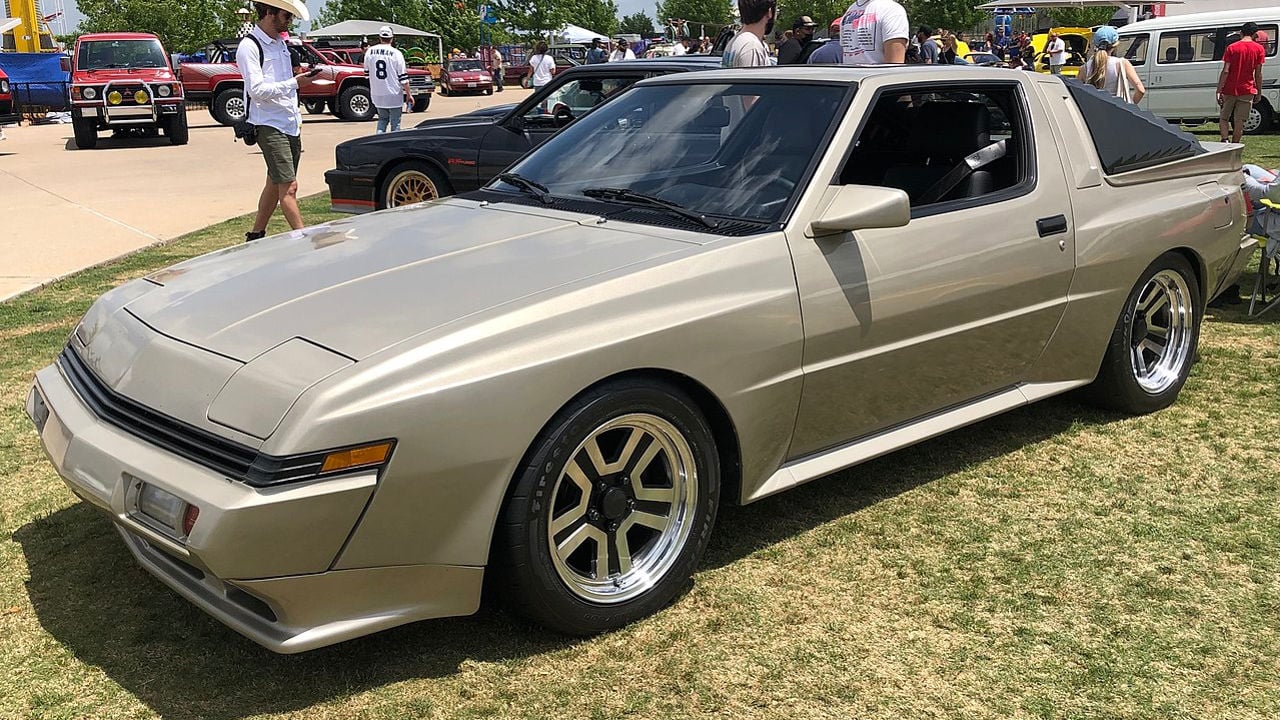
The Mitsubishi has become a true rarity, and it was one of the first indicators that the Japanese manufacturer could produce a captivating and exciting sports car for sale globally. The US version had a 2.6-liter Astron engine under the hood, but other countries would recieve the Starion with the legendary 4G63. Sleek styling inspired by the Renault-Alpine A310, pop-up headlights, and beefy ESi-R variants added to the allure of the Starion. Its replacement, the 3000GT, never lived up to the legacy of its angular predecessor.
Porsche 944 Turbo & Turbo S
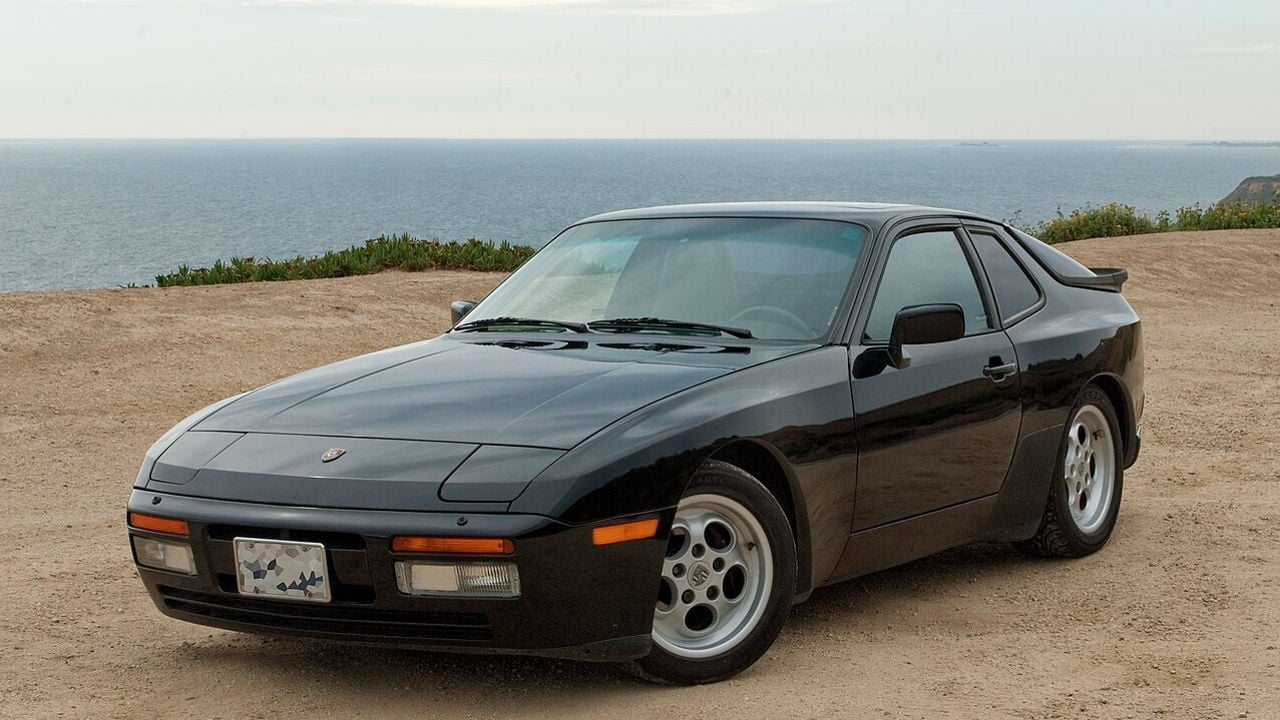
The 944 Turbo itself is worthy of a place on this list. Porsche turbocharged its 2.5-liter inline-four, making 217 hp, which rose to 247 hp in Turbo S guise in 1988. With the latter KKK turbo given 11.7 psi of boost, it was not unheard of for the Turbo S to reach 0-60 mph in just five seconds and blitz the 1/4 mile in just 13. Add in the fantastic design of the 944, and the 944 Turbo & Turbo S remain some of the 1980s most excellent cars.
Saab 900 Turbo
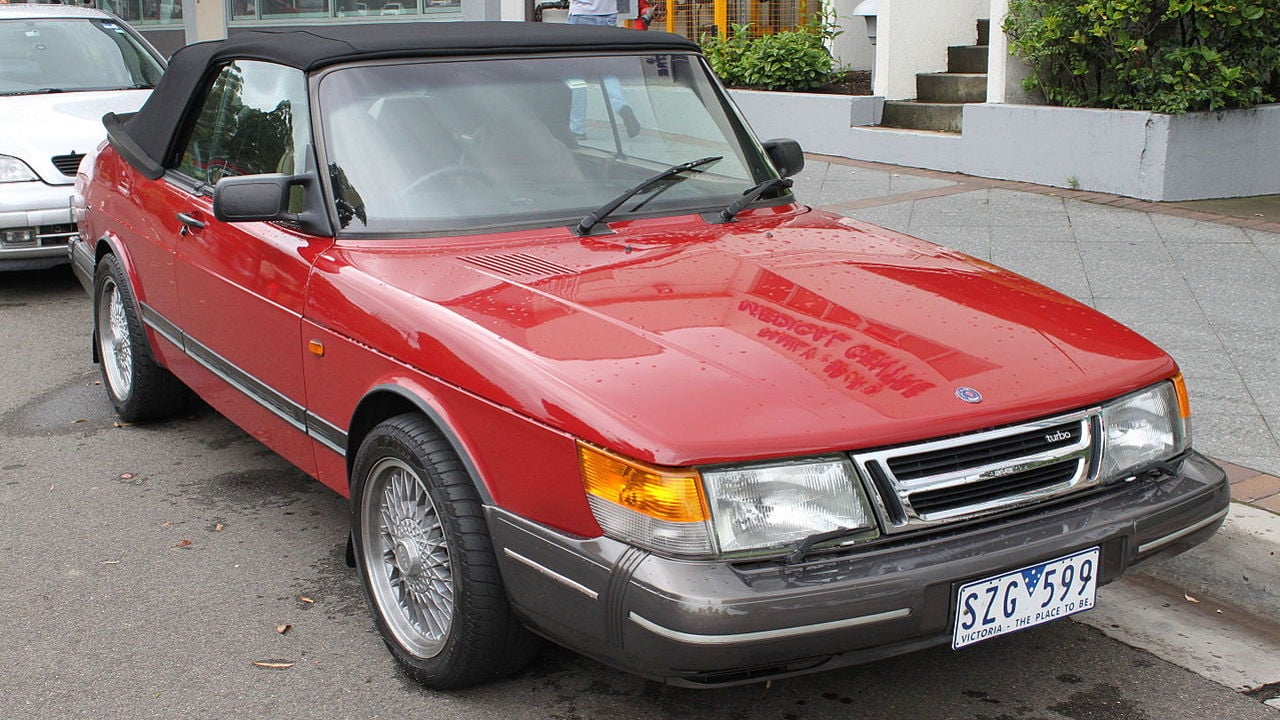
Saab is sadly long gone, but they gave us some genuinely brilliant cars over the years. The 900 Turbo first appeared in 1978, but in 1982, it received electronic boost control, and then in 1985, it received eight valves and an intercooler. These improvements allowed the 900 Turbo to unlock its full potential. The 2.0-liter turbocharged four-cylinder produced 160 hp and 188 lb-ft of torque.
- SEO Powered Content & PR Distribution. Get Amplified Today.
- PlatoData.Network Vertical Generative Ai. Empower Yourself. Access Here.
- PlatoAiStream. Web3 Intelligence. Knowledge Amplified. Access Here.
- PlatoESG. Carbon, CleanTech, Energy, Environment, Solar, Waste Management. Access Here.
- PlatoHealth. Biotech and Clinical Trials Intelligence. Access Here.
- Source: https://teslatale.com/coolest-cars-1980s-released/
